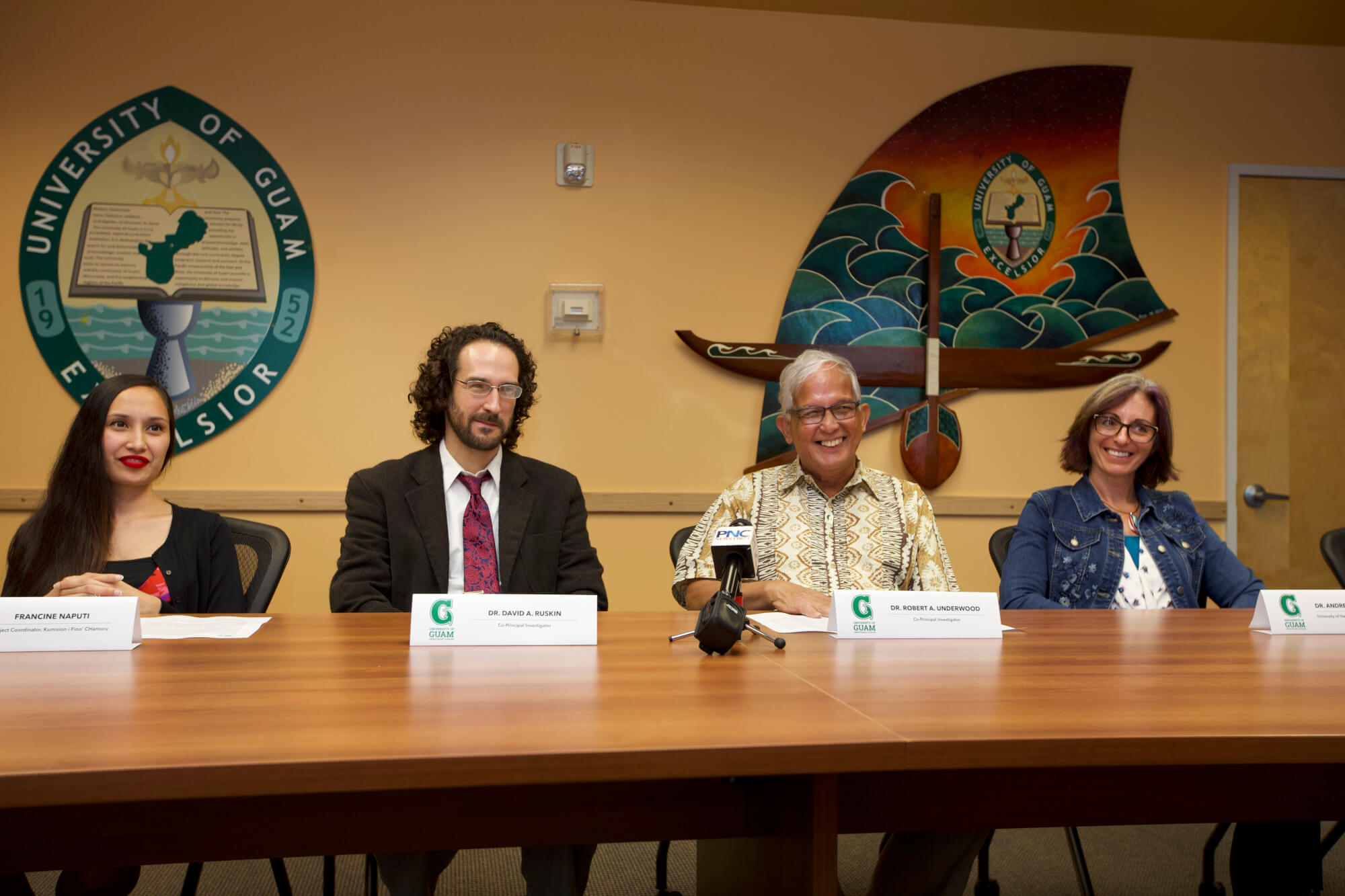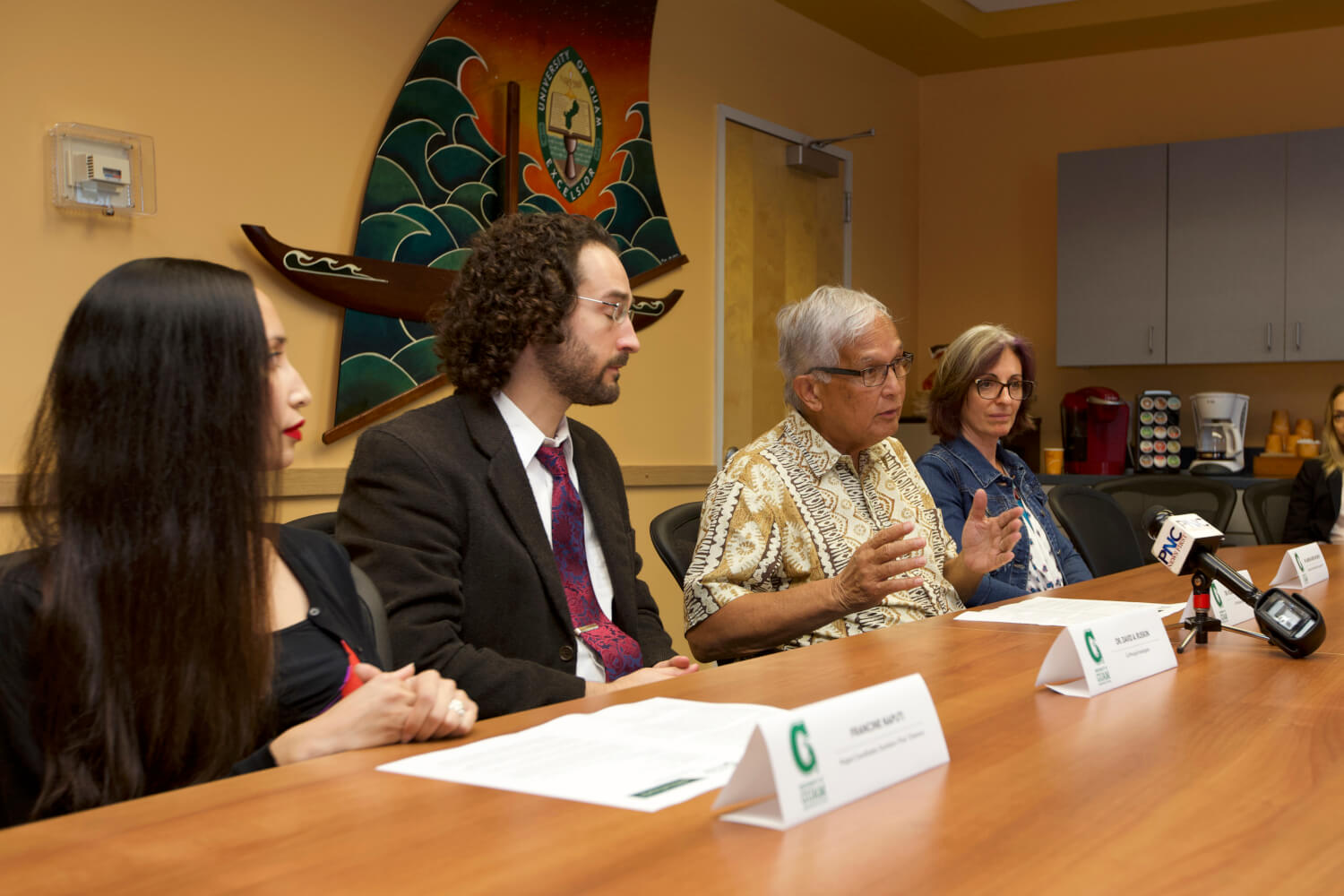- Home
-
Admissions
-
Academics
-
Students
-
Research
-
Research Centers
- Cancer Research Center
- Center for Excellence in Development Disabilities Education, Research & Service (CEDDERS)
- Center for Island Sustainability (CIS)
- Marine Laboratory
- Micronesian Area Research Center (MARC)
- UOG Land Grant | agInnovation Research Center
- Water and Environmental Research Institute (WERI)
-
Programs and Departments
- Guam EPSCOR
- Guma' Tinemtom - Micronesia Data Laboratory
- Pacific Islands Climate Adaptation Science Center (PI-CASC)
- Pacific Islands Cohort on Cardiometabolic Health (PICCAH)
- Research Corporation of UOG
- RFK Memorial Library
- UOG Press
- UOG Sea Grant
- University Libraries Digital Team
- NASA Guam Space Grant
- NASA Guam EPSCoR
-
Research Centers
-
Outreach
- Giving
- Alumni
-
About
UOG wins grant to document the CHamoru language
UOG wins grant to document the CHamoru language
UOG wins grant to document the CHamoru language
9/12/2019

The University of Guam will begin work to formally document and create a repository for the CHamoru language through a grant awarded this week to the College of Liberal Arts & Social Sciences. The Documenting Endangered Languages grant is the first-ever National Science Foundation grant awarded to the liberal arts college and will fund a project titled “Developing CHamoru Language Infrastructure: Goggue Yan Chachalani Mo’na I Fino’-ta (Embrace and Make a Way Forward for Our Language).”
“This is a major step toward documenting key grammatical features of the CHamoru language in a formal way,” said Robert A. Underwood, co-principal investigator of the project and president emeritus of the University of Guam.
The grant will provide $275,000 toward the project, which seeks to provide an in-depth understanding of the underpinnings of the CHamoru language as spoken by remaining first-language CHamoru speakers and to develop a CHamoru cadre of language documenters drawn from university students and language educators in Guam.

The project will select 10 individuals for whom CHamoru is their first language and who are acknowledged experts in the language. Over the course of three years, these individuals will identify traditional terms and cultural practices related to five specific cultural areas. They will also be asked to produce speech samples to be archived.
The grant will build a local repository at the Micronesian Area Research Center as well as formal linguistic tagging and archiving at the University of Hawaii. The Kumision i Fino’ CHamoru will be a primary partner, maintaining a working repository on the CHamoru language as part of its sponsorship of a Language Revitalization Center.
“This project will simultaneously generate new information and collect existing data in a way that is useful for linguists, the CHamoru community, and academics studying endangered languages,” said David Ruskin, an assistant professor of linguistics at the university and co-principal investigator of the project. “The project will create an audio and video snapshot of how people actually speak and use the CHamoru language today, preserving that knowledge for future generations.”
The documentation from the project will be accessible to the community through an archive created at the Micronesian Area Research Center at the University of Guam as well as through a YouTube channel, podcast, and social media.
